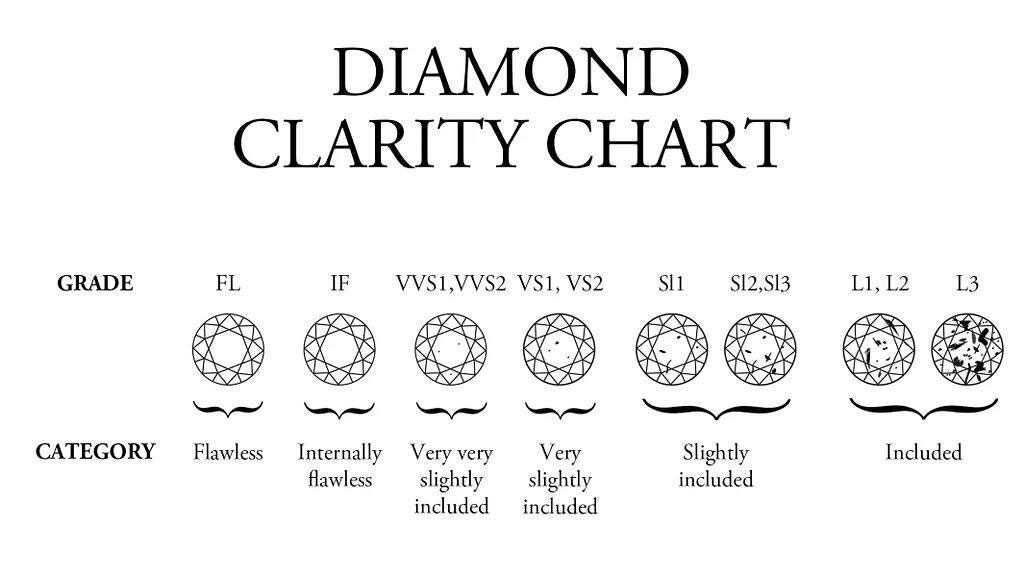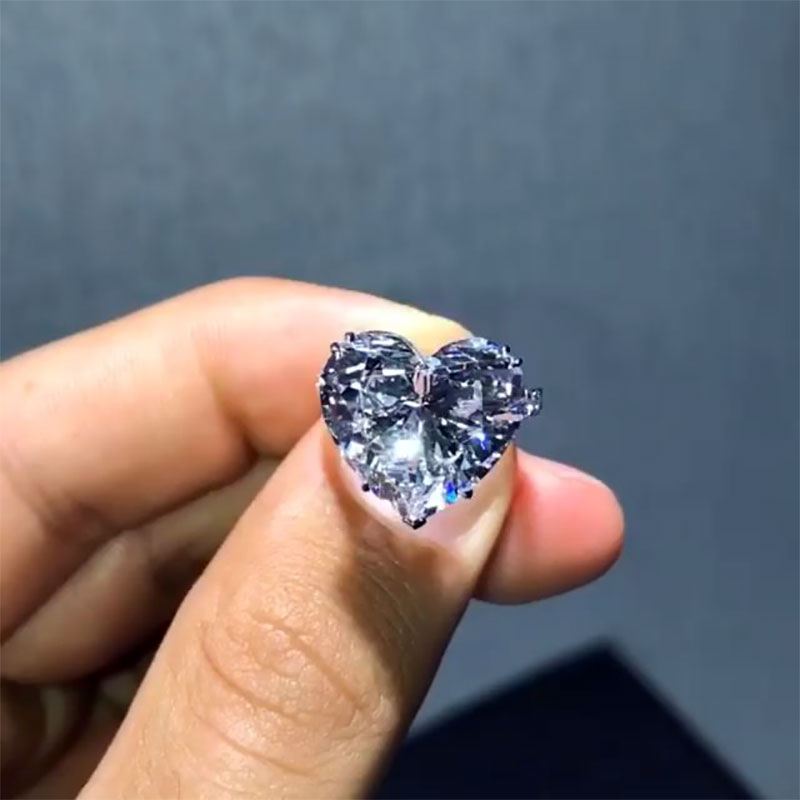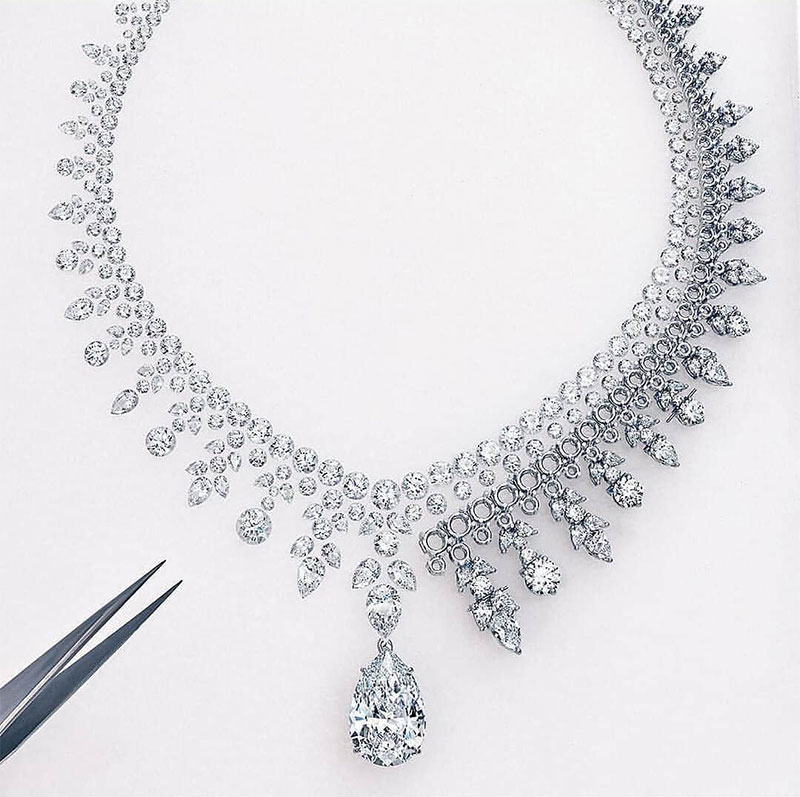Using a diamond clarity chart can be one of the most useful and easy ways to determine diamond clarity, and therefore, how much you should pay for a diamond. When it comes to buying diamonds, most people would prefer to buy the best diamond that they can afford. Diamonds are graded by jewelers using many different criteria to determine what that particular diamond this worth. One of the most important criteria used to determine how much a diamond is worth is its clarity. The diamond clarity can determine anywhere from 20-30% of the value of the diamond!

Diamond Clarity Decoded
When you buy a diamond, there should be a clarity grade assigned to it by a gem lab such as GIA (Gemological Institute of America). Those grades can be confusing to someone not familiar with jewelry trade lingo. So your diamond has a clarity grade of F1. An F? Your diamond has flunked the grading test? Not at all! Actually, if your diamond has been graded F1, it is the clearest of the clear in the diamond world.
All diamonds have flaws or inclusions inside. These inclusions are the result of naturally occurring bubbles, cracks, and organic matter. The natural process of carbon being compressed and heated over time (lots of time!!) creates the beautiful mineral we know as diamonds. Sometimes a small speck of carbon will not completely be transformed into diamond material. When a diamond is cut, lapidaries (gem and mineral cutting professionals) try to maximize the size of the diamond cut from rough material while also removing those parts of the diamond containing inclusions. Any inclusions remaining in the finished diamond must be accounted for and documented when grading the overall value of the diamond.

These inclusions are graded from F, meaning flawless, to I, meaning included. Within this grading scale, there are many different grades. Diamonds may also have blemishes which are actually surface flaws. If a diamond is judged to be flawless, that means there are no inclusions or blemishes on or within the diamond. Flawless diamonds are extremely rare. Diamonds that are graded I1 through I3 have inclusions that are visible under 10 times magnification, as well as to the human eye. It is generally not recommended to buy any diamonds that have that grade. If a diamond has been graded anywhere between a flawless and slightly included, this only has an effect on and the value of a diamond, not on the appearance of the unmagnified diamond. Even though flawless diamonds are the rarest type of diamond, you do not need to have a flawless diamond for it to be absolutely gorgeous.
Get What You Pay For and Pay For What You Get
While the inclusions and or blemishes a diamond has can affect its value, those same inclusions and blemishes can also be considered to be the “fingerprints” of the diamond. GIA includes a plot of a diamond’s inclusions that can be used to compare one diamond to another, and also will show you that you are getting the correct diamond and that it is worth what you are paying for it.
If you decide that you would like to purchase a diamond has been graded flawless or internally flawless you should expect to pay quite a bit for it. Diamonds that are graded as very very small (VVS)and very small (VS) inclusions are a great choice because you’ll get both value and a stunning appearance from the diamond. Diamonds included in the slightly included one (SI1) and slightly included two (SI2) groups are also usually a great buy. These diamonds are called “eye clean” because there are no inclusions or blemishes visible unless the diamond is looked at under at least 10 times magnification. As you can see, the amount of money you want to spend on your diamond will determine the clarity grade that you should choose. Of course, that works the other way – you may have to get a diamond farther down on the clarity chart depending on how much money you have to spend.

A Diamond Clarity Chart Used By Gemologist’s to Grade the Clarity of Diamonds:
As you can see, the clarity of diamonds is an important part of their grading process, but remember that there are factors that go into deciding the value of a diamond other than clarity. Using a diamond clarity chart to determine what a diamond is worth is a helpful way to begin deciding the value of the stone, but it isn’t the only way to determine how valuable the diamond is.
Always buy the best diamond you can afford, and ask to see the gemological report on any diamond purchase. That way you will be sure to get what you pay for as well as pay for what you get, and you will receive a beautiful diamond that someday just may become a family heirloom.
Don’t want to try to memorize the chart and have to remember all that info while you are diamond shopping? Click on our chart and then print it out for a handy cheat sheet!
If you liked this article, you might be interested in finding out more about yellow diamond engagement rings or diamond stud earrings here at Rings For Women!

 Swarovski Crystal Beads
Swarovski Crystal Beads